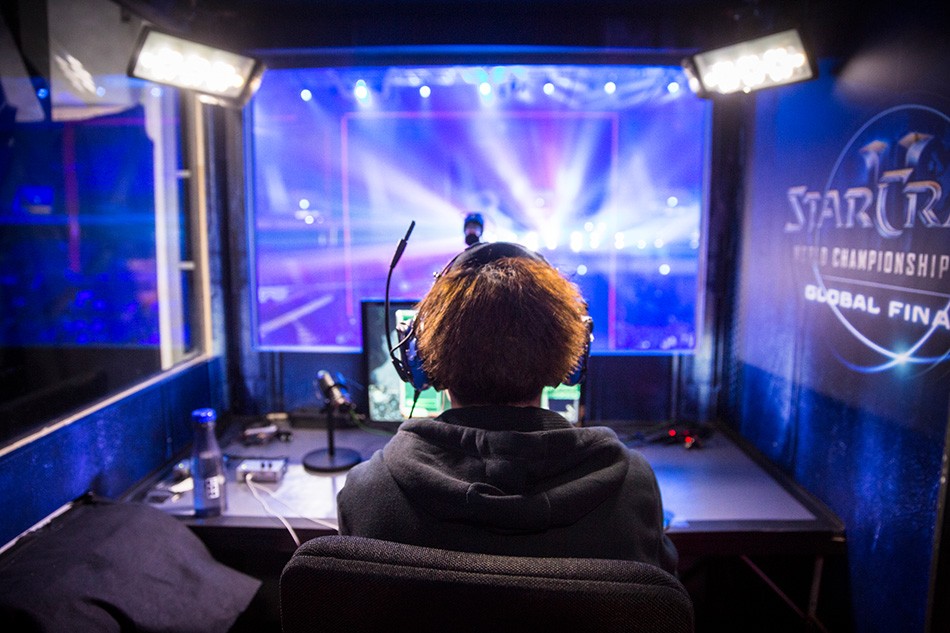

Intelligent Machines
StarCraft Pros Are Ready to Battle AI
Elite players of the strategy game reveal how they would fight high-level AI bots created by DeepMind, Facebook, and other tech companies.

Message from the world’s best StarCraft players to the world’s most advanced AI: bring it on.
The space-war computer game is widely regarded as the ultimate challenge for AI programs due to its complexity and rapid pace. Expectations for a match-up between a professional StarCraft player and sophisticated AI ratcheted up last year after an AI program beat a highly ranked human player at Go, one of the world’s most difficult board games. At the time, a number of AI experts pointed to StarCraft as the next target for an AI-versus-man showdown. Among them: Demis Hassabis, the founder and CEO of DeepMind, the AI-focused division of Alphabet that created the triumphant Go-playing AI program, AlphaGo.
MIT Technology Review asked two leading StarCraft players—Byun Hyun Woo, winner of the 2016 StarCraft II World Championship Series, and Lee Jaedong, a recently retired professional player who now works as a StarCraft commentator—how they would fare against an AlphaGo-type program, the battle strategy they would use, and what rules they would impose to keep the contest fair.
Both players live in South Korea, which has long been the world’s most competitive StarCraft venue. Both are willing to duel with an elite AI program in a televised StarCraft contest, if one were to be held. But beyond that, their opinions diverge. Byun is far surer about his chances against AI. “I don’t think AI can beat [a professional player], at least not in my lifetime,” says the 24-year-old.
His confidence stems, in part, from key differences between Go and StarCraft. Go is considered a “perfect information game” because both players can see the whole board. In StarCraft, players can’t view the entire field of play and thus have less information to analyze when planning their moves. That matters because StarCraft is a real-time strategy game that requires players to manage resources, scout and patrol territories, and plan battles. (Players typically win by destroying all of their opponents’ structures or forcing them to surrender.) “When you play StarCraft, you have to respond very quickly to lots of uncertainties and variables, but I’ve noticed that AI like AlphaGo isn’t that good at reacting to unexpected scenarios,” Byun says.
Another reason Byun is skeptical of StarCraft AI: players need to devise and execute long-term strategies to stay ahead of their opponents. “It’s still difficult to design AI that is really, really good at both short- and long-term decision-making,” he says.
Lee isn’t so sure of his chances. He thinks AI bots could defeat a pro because they never tire and can move much faster than humans. Skill in StarCraft hinges, in part, on how quickly players can tap a keyboard and click a mouse, a metric known as APM (“actions per minute”). Top human players can make several hundred of these commands a minute; AI programs can issue tens of thousands. “Machines will overpower humans if the AI consistently levels up its technology to a point that humans can’t follow,” says Lee.
Some StarCraft experts believe an AI’s APM should be capped at a high human level in a competition. Lee agrees, but Byun thinks that placing any limitations on a bot would diminish the point of pitting the world’s best human player against the world’s best AI. Instead, he says he would use “irregular and unconventional playing tactics” to outpace the program. “I would block its attempts to patrol my facilities, to prevent it from monitoring my assets,” says Byun. “If my facilities were patrolled, I would drop any building construction plans [and use unexpected scenarios].”
Simple StarCraft AI has been demonstrated at university-hosted competitions over the past few years. The oldest of those contests, AIIDE, which was first held at the University of California, Santa Cruz, in 2010, often makes its winning bot wrangle a skilled amateur. Dave Churchill, an assistant professor of computer science at Memorial University of Newfoundland, who has run the AIIDE competition for the past six years, says the contest’s AI bots generally play at a “low amateur” level and have never won against a proficient human player.
An AlphaGo-caliber AI program would put up a fiercer fight, though, and there are hints that DeepMind and other tech companies are developing AI programs that can play StarCraft. Last November, DeepMind announced it would collaborate with StarCraft publisher Blizzard to create a free, open-source API tool to enable researchers to test AI algorithms in StarCraft II. Around the same time, Facebook’s AI Research group described a reinforcement-learning algorithm it made for StarCraft and released its own free, open-source tools to help AI researchers link deep-learning algorithms to an early version of the game. In March, researchers at Chinese e-commerce giant Alibaba revealed they had written a reinforcement-learning framework for StarCraft.
DeepMind declined to comment on whether it would organize an AlphaGo-like match with StarCraft players, saying only, “We remain focused on releasing the StarCraft II API, which is planned for the coming months.”
When could a future AI bot trounce a professional StarCraft player like Byun or Lee? Churchill estimates within the next five to 10 years, but adds, “If you had asked Go AI experts a month before AlphaGo came out, ‘How long before AI can beat the world champion at Go?’ most people would have said, ‘Five to ten years.’ AI is moving so fast that you never know.”